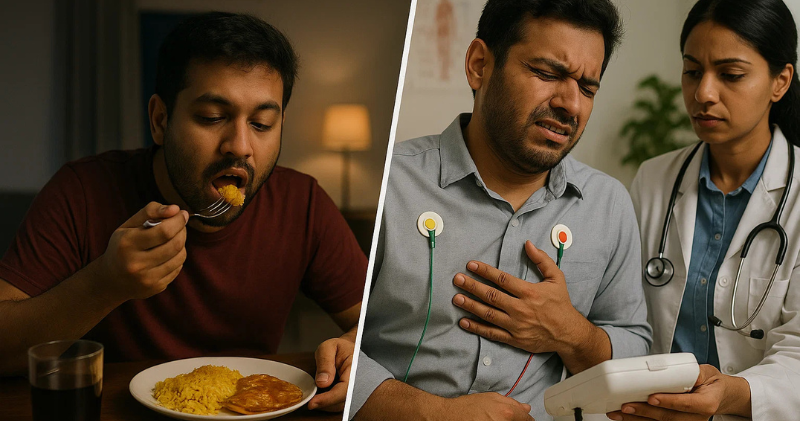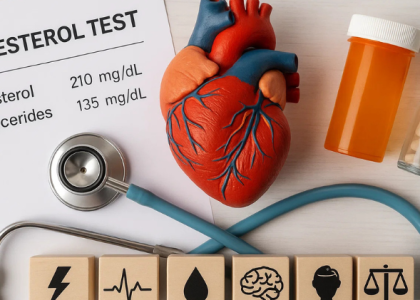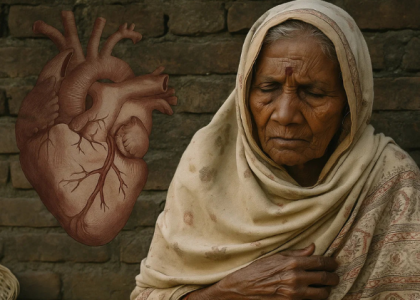It’s 9:15 PM on a Tuesday night. The dining table groans under the weight of a complete South Asian feast—steaming dal, fragrant vegetable curry, perfectly round rotis, fluffy basmati rice, and a small bowl of kheer for dessert. The family gathers after a long day of work and school, sharing stories and laughter over their first real meal together since breakfast.
By 10 PM, everyone’s satisfied and sleepy. They brush their teeth, check their phones, and fall into bed with full stomachs, ready to repeat the same routine tomorrow night.
This scene plays out in millions of South Asian homes worldwide every single evening. It’s how we connect, how we nourish our families, how we preserve tradition in busy modern lives. But what if this beloved nightly ritual is quietly damaging our hearts?
Recent research suggests that when we eat may be just as important as what we eat—and for South Asians, who already face elevated heart disease risk, late-night eating could be the hidden factor that’s pushing our community toward earlier heart attacks, diabetes diagnoses, and cardiovascular emergencies.
Could our cherished dinner traditions be doing more damage than we think? The answer might change how your family approaches their evening routine forever.
Why the Time You Eat Matters More Than You Think
Your body runs on an internal clock called your circadian rhythm—a 24-hour cycle that controls everything from hormone production to digestion. Just like you naturally feel sleepy at night and alert in the morning, your digestive system also follows a predictable schedule.
Here’s what most people don’t realize: your body’s ability to process food peaks during daylight hours and dramatically slows down as evening approaches. Think of your metabolism like a factory—during the day, all the workers are alert and efficient, but by 9 PM, they’re winding down for the night shift.
When you eat late, several harmful things happen:
Blood Sugar Chaos: Your body produces less insulin in the evening, meaning the same meal that might be fine at lunch can cause dangerous blood sugar spikes at dinner. That innocent bowl of rice becomes much more problematic when eaten at 9 PM versus 6 PM.
Fat Storage Mode: Late-night calories are more likely to be stored as fat, particularly the dangerous visceral fat that wraps around your organs. Your body assumes you won’t need immediate energy since sleep is approaching, so it files those calories away for later.
Insulin Resistance Development: Consistently eating large meals late forces your body to produce insulin when it’s naturally trying to wind down. Over time, your cells become less responsive to insulin—the first step toward diabetes.
Sleep Quality Destruction: A full stomach interferes with deep, restorative sleep. Poor sleep then worsens insulin resistance and increases stress hormones that promote heart disease. It’s a vicious cycle where late eating creates the conditions for worse late eating.
According to Harvard Health, eating large meals within three hours of bedtime can increase your risk of acid reflux, weight gain, and metabolic dysfunction¹. Your digestive system needs time to process food before you lie down, but most South Asian families go from dinner table to bed in under an hour.
Why South Asians Are Hit Harder by Late Eating
If late-night eating is problematic for everyone, it’s particularly devastating for South Asian bodies. We’re essentially taking an already loaded gun and adding more bullets.
Genetic Vulnerability: South Asians have higher baseline insulin resistance than other populations, even at healthy weights. Research published in the Indian Journal of Endocrinology & Metabolism shows that we develop insulin problems at lower BMIs and younger ages². When you add late-night eating to this genetic predisposition, you’re accelerating a process that’s already working against you.
Smaller Coronary Arteries: Studies consistently show that South Asians have narrower coronary arteries than other populations. The inflammation and metabolic stress caused by late eating can more quickly lead to dangerous blockages in our smaller blood vessels.
Cultural Food Combinations: South Asian dinners aren’t just late—they’re often heavy, carb-rich, and followed immediately by sleep. A typical 9 PM dinner might include rice, roti, dal, vegetables cooked in oil, and a sweet ending. This combination creates the perfect storm for blood sugar spikes when your body is least equipped to handle them.
The Work-Life Pattern: Many South Asian families delay dinner because of work schedules, commute times, and the desire to eat together as a family. This creates a cultural norm where late eating feels necessary rather than optional. When you add in social dinners, family gatherings, and the tendency to work long hours, late eating becomes deeply embedded in lifestyle patterns.
Missing Breakfast Connection: Late dinners often lead to skipped or delayed breakfasts the next morning because you’re simply not hungry yet. This creates an extended fasting period followed by massive caloric intake—a pattern that further worsens insulin sensitivity and metabolic health.
What the Research Reveals
The scientific evidence on late eating and heart health is both compelling and alarming, especially for populations already at elevated risk.
A landmark study published in the American Heart Association journal found that people who ate their largest meal after 6 PM had significantly higher risk of cardiovascular disease, regardless of what they ate³. The timing itself was an independent risk factor—meaning even healthy foods became problematic when consumed late.
Harvard researchers followed over 26,000 men for 16 years and discovered that those who ate late dinners had a 55% higher risk of coronary heart disease compared to those who ate earlier⁴. The researchers noted that late eating was associated with higher blood pressure, elevated cholesterol, and increased insulin resistance—all major risk factors that disproportionately affect South Asians.




